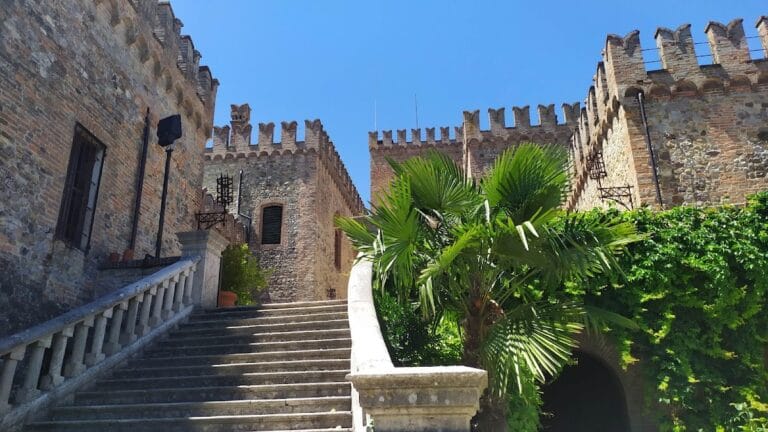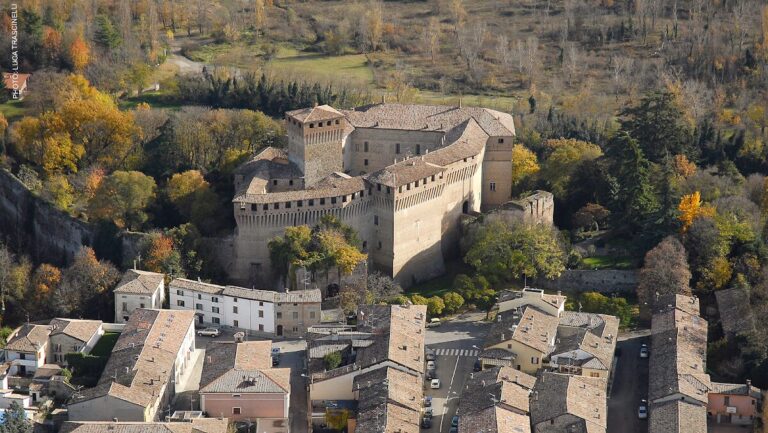Castle of Selva Smeralda: A Medieval Fortress in Terenzo, Italy
Visitor Information
Google Rating: 4.8
Popularity: Very Low
Google Maps: View on Google Maps
Country: Italy
Civilization: Unclassified
Remains: Military
History
The Castle of Selva Smeralda is a medieval fortress located within the municipality of Terenzo in modern Italy. Although its exact origins are unclear, it was constructed during the medieval period by local noble families who dominated the region.
During the 13th century, the settlement known at the time as Nivianus Draconorum, along with its castle and chapel, belonged to the Draghi family. This community fell under the religious jurisdiction of the parish of San Vitale Baganza. Later on, control of the castle was assumed by the prominent Rossi family, who played a significant role in the area’s feudal landscape.
In 1409, the castle faced a siege led by Ottobuono de’ Terzi. This military action forced the Rossi brothers to hand over multiple fortresses to the Terzi family as part of a peace settlement. However, by 1424, Duke Filippo Maria Visconti, ruler of Milan, restored these lands to Pietro de’ Rossi, reaffirming the family’s hold. The castle remained with the Rossi lineage until 1464, when Pier Maria II de’ Rossi gifted it and several associated fiefs to his son, Guido Neviano de’ Rossi.
Following the death of Pier Maria II during what has been called the Rossi War, ownership of the castle passed to Colonel Lorenzo Smeraldi from Parma. The fortress witnessed significant turmoil during the War of Parma in 1552. Imperial troops commanded by Ferrante I Gonzaga attacked and looted the castle and its surrounding village. Giovanni Smeraldi, an ally of the influential Farnese family, was captured amid this conflict. After imprisonment, a daring escape, and subsequent recapture, he was executed. In the aftermath, the Smeraldi family abandoned the castle, retreating to Parma.
By the late 17th century, the Smeraldi lineage merged with the Tarasconi family, creating the Counts Tarasconi Smeraldi, who maintained authority over the property until the abolition of feudal rights under Napoleon in 1805. Subsequently, the castle changed hands through the Folli family and later the Hungarian Orbàn family. It underwent thorough restoration in recent times and was adapted for agricultural lodging before being repurposed as a summer residence.
Remains
The Castle of Selva Smeralda crowns a steep hillside overlooking the Sporzana stream valley, standing alone amidst cultivated fields. Its main surviving element is an imposing keep, or mastio, dating back to the 14th century. This tower, built primarily of brick masonry, has endured remarkably well, retaining much of its original structure. Notably, it preserves carved stone corbels—projections supporting parts of the upper structure—on three of its sides, offering insight into medieval construction techniques.
Next to the square-shaped tower lie ancillary buildings constructed with a combination of stone and brick. These outbuildings have experienced alterations over the centuries but have benefited from careful restoration during the early 2000s. While some internal rooms have been adapted to house agricultural equipment, much of the castle’s core fabric remains intact.
No specific decorative elements or inscriptions have been documented on the site, and the castle’s layout demonstrates a typical fortified design adapted to its strategic hillside setting. The surviving walls continue to bear witness to the fortress’s long history of ownership changes, military conflict, and transformation into a rural estate.







